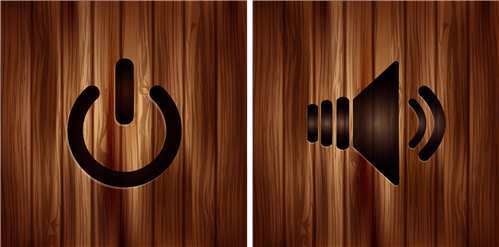SSZTA60 May 2017 MSP430FR2512 , MSP430FR2522 , MSP430FR2532 , MSP430FR2533 , MSP430FR2632
Maybe you didn’t know it, but a sleek new user interface is coming to your dinner table. Seriously, furniture manufacturers are increasingly turning to touch technology to modernize the staid old furnishings that have been their stock in trade for centuries. Of course, in order to add a touch interface to a piece of furniture, the technology must be high performance enough to sense through wood. And that’s a tall order unless your touch controller has both all-around robustness and sensitivity.

Sensing through wood is not a trivial capability given the dielectric nature of wood, but it does open up new horizons to industrial designers looking for a classic, natural material to incorporate into their products or wood craftsmen who want to integrate electronic features into their designs. In addition to smart furniture, touch sensing through wood could find its way into stereo equipment like speakers or tuners, sound bars or even headphones. A more utilitarian application might be a doorbell or electronic lock built into a wooden door frame.
To accomplish these types of applications, a specialized capacitive touch front end on a powerful yet low-power microcontroller (MCU) is likely a must. MSP430FR25x/26x MCUs, which were introduced about a year ago and feature TI’s CapTIvate™ touch technology, are quite capable of achieving the performance and touch sensitivity designers need. In fact, tests have shown that these MSP430™ MCUs can sense through laminated plywood up to .75 inches thick and particle board 1 inch thick.
Of course, there is a great deal of variability in wood. It is an organic material and the wood from each different species of tree is uniquely constituted. Two pieces of wood are practically never identical in terms of thickness. That presents challenges when incorporating touch technologies into wood products on a manufacturing line. Furthermore, wood craftsmen cannot be expected to have the technical knowledge or expertise to integrate complex electronic systems into their products.
MSP430FR25x/26x MCUs overcome these challenges in a number of ways. For one thing, an MCU with a dedicated touch front end is a simple one-chip solution for what otherwise might be an intricate system implementation, significantly simplifying the complexity of installing the system into a wooden framework. In addition, CapTIvate technology’s graphical user interface has adjustable gain, responsiveness and sensitivity, enabling any maker or craftsman to quickly prototype capacitive touch sensors on a piece of wood. When given a defined expected capacitance count to detect a touch, CapTIvate technology will adjust its parameters to most effectively maintain responsiveness and sensitivity. An extensive library of haptic drivers supports tactile response, if required.
Touch technology embedded in wood might also be subject to moisture penetration, stemming from a spilled drink on the arm of a chair or rain on a door frame. CapTIvate technology can adapt to changes in environment using a hardware state machine.
Most of these embedded applications will be battery-powered; consumers will want to avoid having to plug their furniture into electrical outlets if at all possible. As a result, the touch system must be extremely low power so that it can operate from a battery for an extended period of time. With CapTIvate technology, a four-sensor touch system consumes as little as 0.9µA per sensor. Such a system can operate off of a coin-cell battery for years.
CapTIvate technology also supports both self- and mutual-capacitance capacitive sensors. In fact, designers can deploy both types in the same system. Self-capacitance sensors have higher resolution for features like sliders and wheels. Mutual-capacitance sensors are typically used in a system requiring the sensors placed closer together in a tight-knit array.
With advances like the CapTIvate touch front end on MSP430 MCUs, touch technology is sure to become more and more pervasive in a wide variety of applications. Touch simply offers greater convenience and ease of use, and most users understand it intuitively.
Additional Resources
- Get started evaluating with the BOOSTXL-CAPKEYPAD capacitive touch BoosterPack module or the MSP-CAPT-FR2633 CapTIvate development kit.
- Learn more about CapTIvate MCUs in this technology guide.
- Interested in this topic? Read these other blog posts: